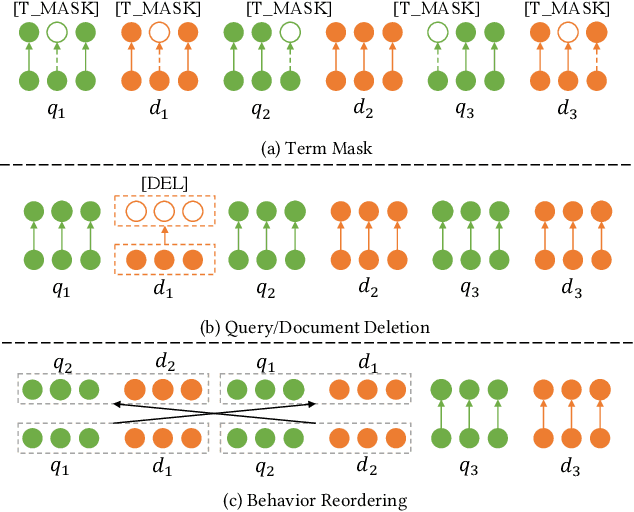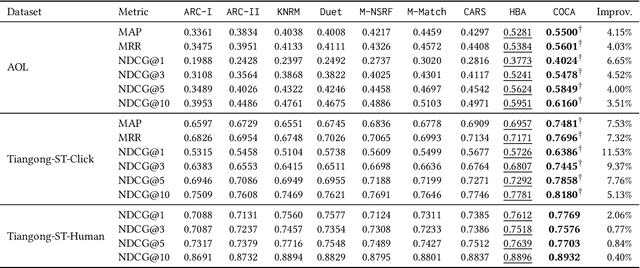Xiaochen Zuo
VAPO: Efficient and Reliable Reinforcement Learning for Advanced Reasoning Tasks
Apr 08, 2025Abstract:We present VAPO, Value-based Augmented Proximal Policy Optimization framework for reasoning models., a novel framework tailored for reasoning models within the value-based paradigm. Benchmarked the AIME 2024 dataset, VAPO, built on the Qwen 32B pre-trained model, attains a state-of-the-art score of $\mathbf{60.4}$. In direct comparison under identical experimental settings, VAPO outperforms the previously reported results of DeepSeek-R1-Zero-Qwen-32B and DAPO by more than 10 points. The training process of VAPO stands out for its stability and efficiency. It reaches state-of-the-art performance within a mere 5,000 steps. Moreover, across multiple independent runs, no training crashes occur, underscoring its reliability. This research delves into long chain-of-thought (long-CoT) reasoning using a value-based reinforcement learning framework. We pinpoint three key challenges that plague value-based methods: value model bias, the presence of heterogeneous sequence lengths, and the sparsity of reward signals. Through systematic design, VAPO offers an integrated solution that effectively alleviates these challenges, enabling enhanced performance in long-CoT reasoning tasks.
A Unified Pairwise Framework for RLHF: Bridging Generative Reward Modeling and Policy Optimization
Apr 07, 2025Abstract:Reinforcement Learning from Human Feedback (RLHF) has emerged as a important paradigm for aligning large language models (LLMs) with human preferences during post-training. This framework typically involves two stages: first, training a reward model on human preference data, followed by optimizing the language model using reinforcement learning algorithms. However, current RLHF approaches may constrained by two limitations. First, existing RLHF frameworks often rely on Bradley-Terry models to assign scalar rewards based on pairwise comparisons of individual responses. However, this approach imposes significant challenges on reward model (RM), as the inherent variability in prompt-response pairs across different contexts demands robust calibration capabilities from the RM. Second, reward models are typically initialized from generative foundation models, such as pre-trained or supervised fine-tuned models, despite the fact that reward models perform discriminative tasks, creating a mismatch. This paper introduces Pairwise-RL, a RLHF framework that addresses these challenges through a combination of generative reward modeling and a pairwise proximal policy optimization (PPO) algorithm. Pairwise-RL unifies reward model training and its application during reinforcement learning within a consistent pairwise paradigm, leveraging generative modeling techniques to enhance reward model performance and score calibration. Experimental evaluations demonstrate that Pairwise-RL outperforms traditional RLHF frameworks across both internal evaluation datasets and standard public benchmarks, underscoring its effectiveness in improving alignment and model behavior.
DAPO: An Open-Source LLM Reinforcement Learning System at Scale
Mar 18, 2025Abstract:Inference scaling empowers LLMs with unprecedented reasoning ability, with reinforcement learning as the core technique to elicit complex reasoning. However, key technical details of state-of-the-art reasoning LLMs are concealed (such as in OpenAI o1 blog and DeepSeek R1 technical report), thus the community still struggles to reproduce their RL training results. We propose the $\textbf{D}$ecoupled Clip and $\textbf{D}$ynamic s$\textbf{A}$mpling $\textbf{P}$olicy $\textbf{O}$ptimization ($\textbf{DAPO}$) algorithm, and fully open-source a state-of-the-art large-scale RL system that achieves 50 points on AIME 2024 using Qwen2.5-32B base model. Unlike previous works that withhold training details, we introduce four key techniques of our algorithm that make large-scale LLM RL a success. In addition, we open-source our training code, which is built on the verl framework, along with a carefully curated and processed dataset. These components of our open-source system enhance reproducibility and support future research in large-scale LLM RL.
Contrastive Learning of User Behavior Sequence for Context-Aware Document Ranking
Aug 24, 2021



Abstract:Context information in search sessions has proven to be useful for capturing user search intent. Existing studies explored user behavior sequences in sessions in different ways to enhance query suggestion or document ranking. However, a user behavior sequence has often been viewed as a definite and exact signal reflecting a user's behavior. In reality, it is highly variable: user's queries for the same intent can vary, and different documents can be clicked. To learn a more robust representation of the user behavior sequence, we propose a method based on contrastive learning, which takes into account the possible variations in user's behavior sequences. Specifically, we propose three data augmentation strategies to generate similar variants of user behavior sequences and contrast them with other sequences. In so doing, the model is forced to be more robust regarding the possible variations. The optimized sequence representation is incorporated into document ranking. Experiments on two real query log datasets show that our proposed model outperforms the state-of-the-art methods significantly, which demonstrates the effectiveness of our method for context-aware document ranking.
 Add to Chrome
Add to Chrome Add to Firefox
Add to Firefox Add to Edge
Add to Edge